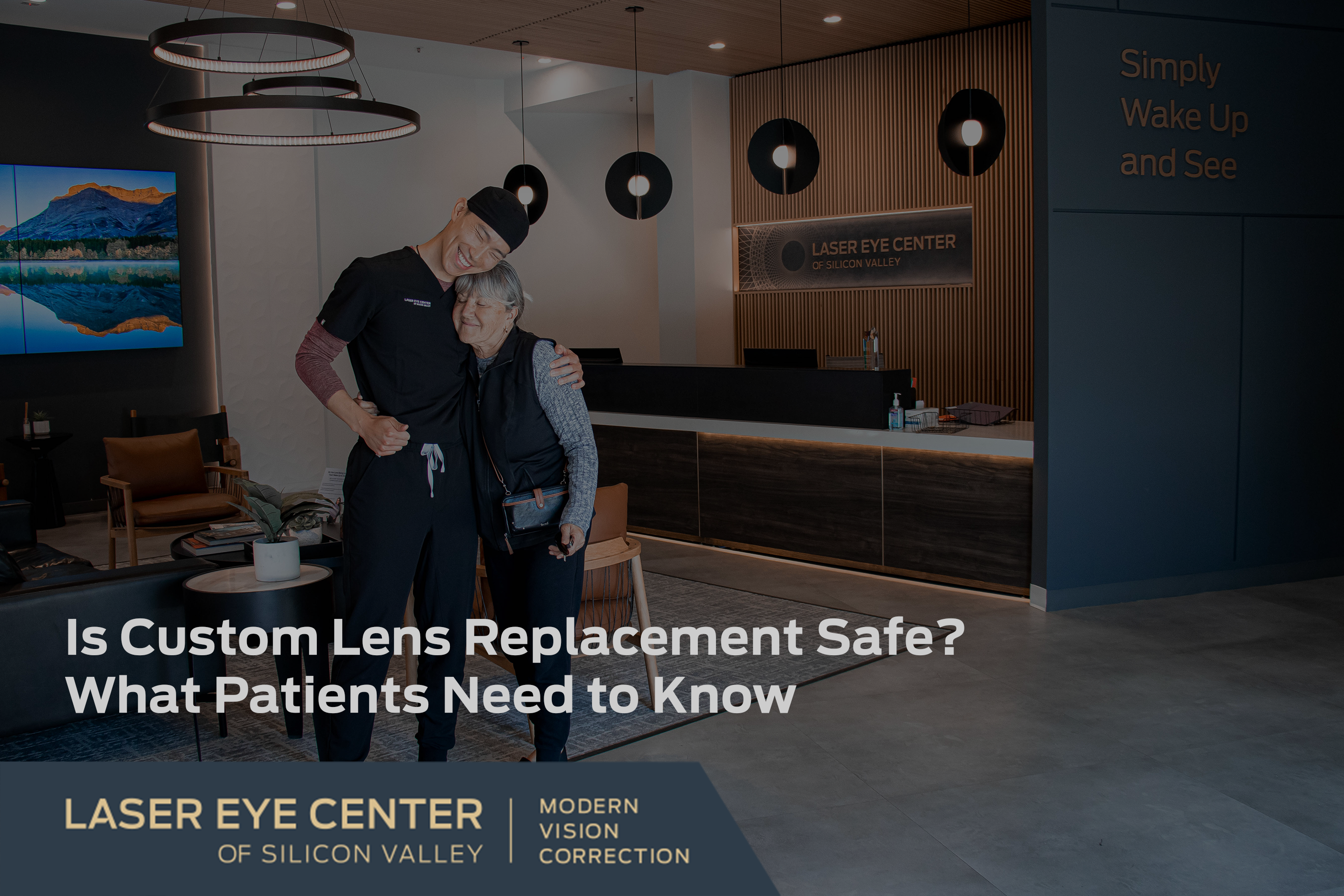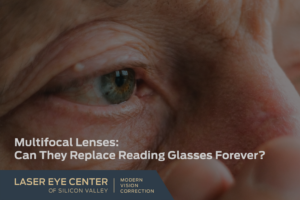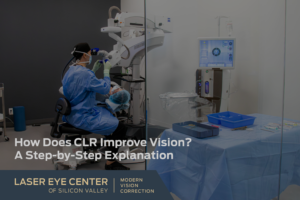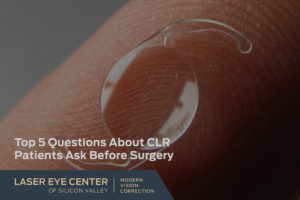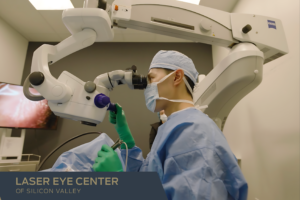What is Custom Lens Replacement (CLR)?
Custom Lens Replacement (CLR) is an advanced vision correction procedure designed to treat a variety of vision issues by replacing the natural lens of the eye with a custom, artificial lens. It is often considered for patients who may have refractive errors or presbyopia, offering a chance to achieve clear vision without the need for glasses or contact lenses.
This procedure is comparable to cataract surgery in its approach, where the dysfunctional natural lens is removed, and an artificial lens is implanted. Unlike traditional cataract surgery, CLR is specifically designed to enhance the quality of vision for patients, offering a broader range of visual correction — from near to far vision — without the dependency on corrective eyewear.
Is Custom Lens Replacement Safe?
When considering any eye surgery, safety is naturally a top concern. So, how safe is Custom Lens Replacement?
The safety record of CLR is highly promising and often likened to the safety record of cataract surgery, a procedure that has been around for decades. According to Dr. Sudhinder Koushik, a refractive surgeon at the Laser Eye Center of Silicon Valley, “Cataract surgery has a wonderful safety profile with a low infection rate and quick recovery.” This same safety record extends to CLR since the procedure builds on the techniques developed for cataract surgery, improving upon them with more customized results.
Proven Safety with Advanced Technology
Dr. Koushik emphasizes the importance of advanced technology and techniques in ensuring the safety of CLR. Laser Eye Center uses sophisticated imaging tools, including their advanced vision analysis system, to gather essential data points about a patient’s eye structure. This helps create a precise surgical plan that reduces the risk of complications and maximizes the potential for successful outcomes.
The safety of CLR also comes from the extensive research and development that have gone into perfecting the procedure. Published data, along with the use of high-quality materials for the artificial lenses, show that CLR boasts a very low rate of complications.
How is CLR Different from Cataract Surgery?
Although CLR is similar to cataract surgery, there are key differences between the two. Cataract surgery is performed when the natural lens becomes cloudy and is typically used to restore vision to those who are losing their sight due to cataracts. In contrast, CLR is elective and used to improve vision in people who are still healthy but may have refractive issues, like nearsightedness or farsightedness.
Dr. Koushik explains that while cataract surgeons are common, refractive surgeons, who specialize in custom lens replacements, undergo additional training to ensure that the surgical outcome not only addresses visual issues but also provides a long-lasting solution for clear, glasses-free vision.
“Refractive surgeons perform CLR with the expectation that patients will no longer need glasses or contact lenses post-surgery, unlike cataract surgery, where patients may still require corrective eyewear,” says Dr. Koushik.
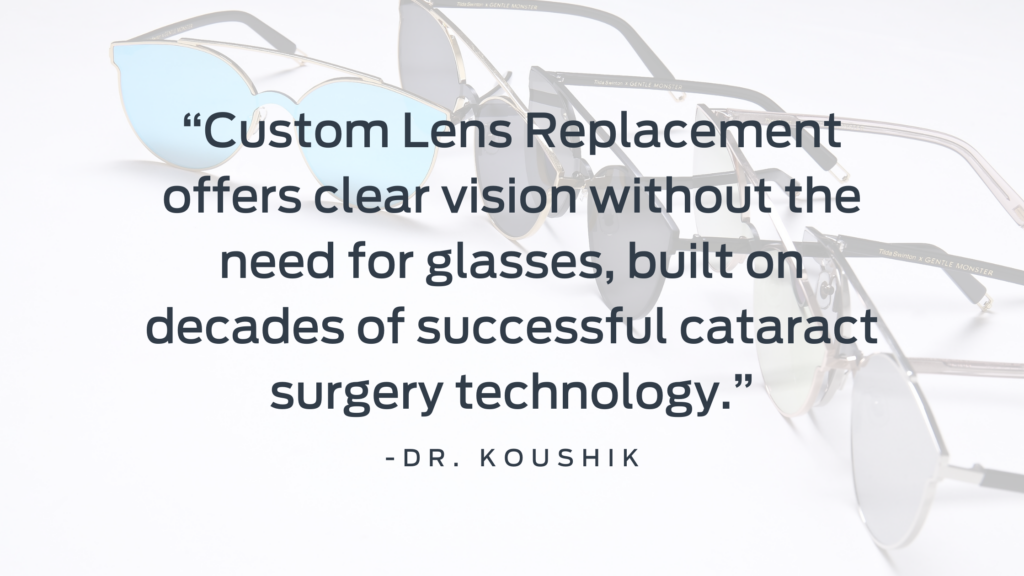
The Importance of Choosing an Experienced Provider
One of the most important aspects of having a successful CLR is selecting the right surgeon. Dr. Koushik advises that patients should look for a refractive surgeon with experience and specialized training in CLR. The technology and techniques used in CLR are evolving, so it’s crucial to choose a provider who stays current with the latest advancements.
At Laser Eye Center, the team emphasizes the importance of a comprehensive pre-surgical exam. “It’s essential to have a thorough eye exam so that your surgeon can evaluate your specific needs and create a customized plan for your CLR,” says Shareef Madavi, Patient Experience Director at Laser Eye Center.
Preparing for CLR: What to Expect
Before undergoing CLR, patients will have a comprehensive eye exam to ensure they are good candidates for the procedure. During the exam, your surgeon will assess factors like the shape and health of your cornea, your eye measurements, and your general eye health.
Once you’ve been cleared for surgery, the procedure itself is quick, usually taking under an hour per eye. Recovery is typically fast, with many patients reporting noticeable improvements in vision within a few days.
Benefits of Custom Lens Replacement
- No More Glasses or Contacts: The goal of CLR is to reduce or eliminate the need for glasses or contact lenses entirely. This is especially beneficial for patients who are tired of managing their eyewear.
- Clear Vision at All Distances: CLR can correct both near and far vision, providing a broader range of visual clarity compared to traditional cataract surgery.
- Low Risk of Complications: With CLR’s proven safety record, patients can feel confident in the procedure’s ability to enhance vision with minimal risk.
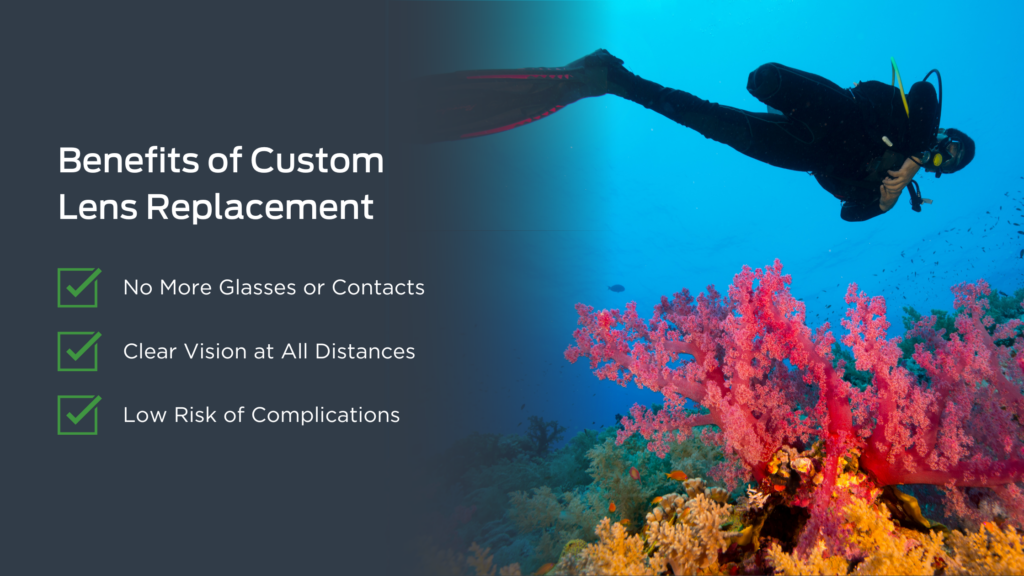
Final Thoughts: Is CLR Safe for You?
For most patients, Custom Lens Replacement is a safe and effective solution to correct vision issues. By choosing an experienced refractive surgeon and a reputable practice, you can be confident that you’re in good hands. If you’re considering CLR, the Laser Eye Center of Silicon Valley offers the expertise, technology, and personalized care to ensure the best possible outcome for your vision.

